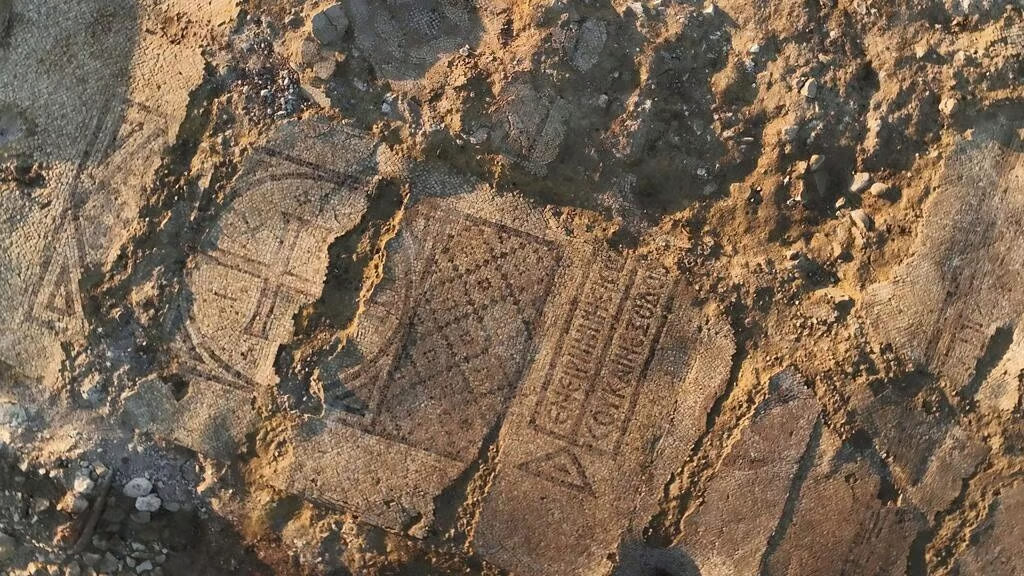Archaeologists in Israel have made a remarkable discovery—a 1,500-year-old Byzantine monastery featuring a beautifully preserved mosaic floor with an inscription from the Book of Deuteronomy. Nearby, a sophisticated winepress and various imported artifacts provide further insight into the settlement’s historical significance during the Roman and Byzantine eras.
Significant Historical Discovery
During excavation efforts ahead of a large-scale development project in Kiryat Gat, the Israel Antiquities Authority uncovered a vast archaeological site that includes remnants of at least ten ancient structures. Among these are a monastery, a large storage facility, and an advanced winepress system. The settlement, which dates back to the Roman period, was continuously inhabited for approximately 600 years before expanding significantly during the Byzantine era.
A Glimpse into a Flourishing Settlement
The site has yielded a wealth of artifacts, including pottery, coins, glass vessels, marble items, and metal tools. These discoveries suggest that the settlement was a prosperous hub, likely supporting smaller surrounding communities and travelers along a major trade route connecting the mountains to the coastal plains.
Exquisite Mosaic and Monastic Architecture
The monastery’s mosaic floor is adorned with intricate geometric patterns, amphorae, floral designs, crosses, lions, and doves. At its center, a Greek inscription reads, "You will be blessed when you come in, and blessed when you go out," a verse from Deuteronomy. The use of finely cut mosaic stones and detailed craftsmanship highlights the artistic and cultural significance of the monastery during the Byzantine period.
Advanced Wine Production Techniques
One of the most notable finds at the site is a meticulously constructed winepress, which underwent multiple renovations over time. The fermentation cells and collection pits feature mosaic flooring in shades of blue and white, with traces of red paint still visible on some plastered surfaces. Some stone slabs in the northern collection pit are marked with Greek letters, likely used as construction guides. The complexity of the winepress indicates a thriving wine production industry that played a key role in the settlement’s economy.
Preserving and Showcasing the Findings
Recognizing the importance of these discoveries, experts from the Israel Antiquities Authority are taking steps to ensure their preservation. The monastery’s mosaic floor will be carefully relocated to a public site in Kiryat Gat for display. Mark Avrahami, head of artistic preservation at the Israel Antiquities Authority, emphasized the delicate process of transferring and restoring the mosaic, underscoring its uniqueness among Israeli archaeological finds.
Connecting the Past with the Future
Officials from the Israel Land Authority and the Antiquities Authority stress the importance of integrating historical preservation with modern development. These discoveries not only provide valuable insights into the region’s past but also foster a deeper connection between local residents and their cultural heritage. By incorporating these findings into public spaces, Israel continues to balance historical conservation with progress, ensuring that the stories of ancient civilizations remain accessible to future generations.







